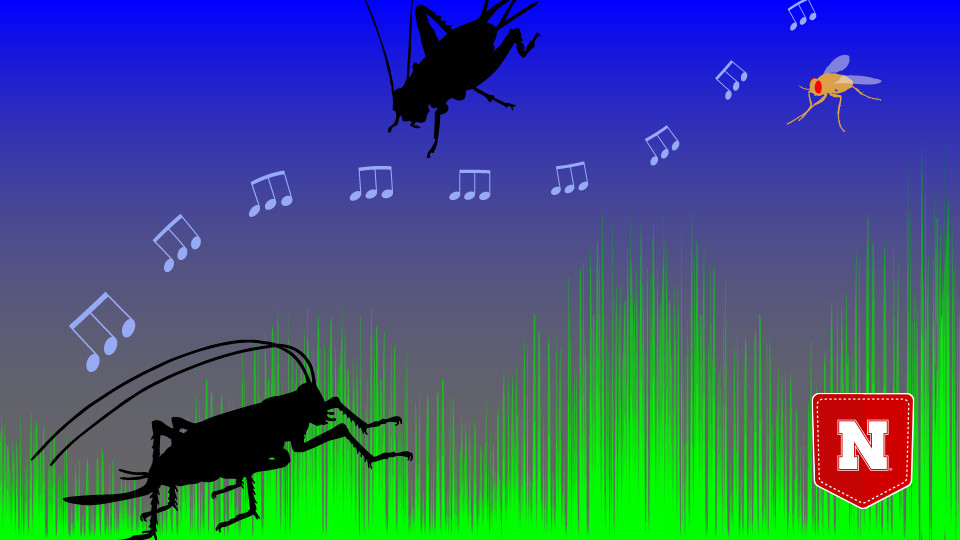· 2 min read
Calculated risk: Crickets draw mates, lethal parasites with upbeat call

Welcome to Pocket Science: a glimpse at recent research from Husker scientists and engineers. For those who want to quickly learn the “What,” “So what” and “Now what” of Husker research.
What?
Males of many animal species have evolved extravagant signals to attract mates, but those signals also risk exposing males to predators and parasites. Researchers have generally hypothesized that natural selection favors subtler mating cues in especially high-risk environments, offsetting females’ preferences for showier displays.
So what?
Nebraska’s William Wagner Jr. and former postdoc Oliver Beckers tested the hypothesis in a cricket species whose males attract females by chirping. Because faster chirps signify males whose seminal fluids allow females to produce more eggs, a higher tempo can draw more females – but also parasitic flies whose larvae rapidly kill both males and the attracted females.
Surprisingly, the researchers found that male crickets from regions occupied by more parasitic flies chirped slightly faster than did crickets from lower-risk areas. And females from those high-risk regions preferred the high-tempo males.
The researchers propose that this approach evolved because the parasitic flies emerge near summer’s end, after many cricket pairs have likely mated. Though the upbeat tempo increases the risk of being killed, it may also allow males and females to maximize reproduction before the flies attack.
Now what?
Further research needs to verify that the timing of parasite invasion actually explains this unexpected courting approach, the researchers said.








